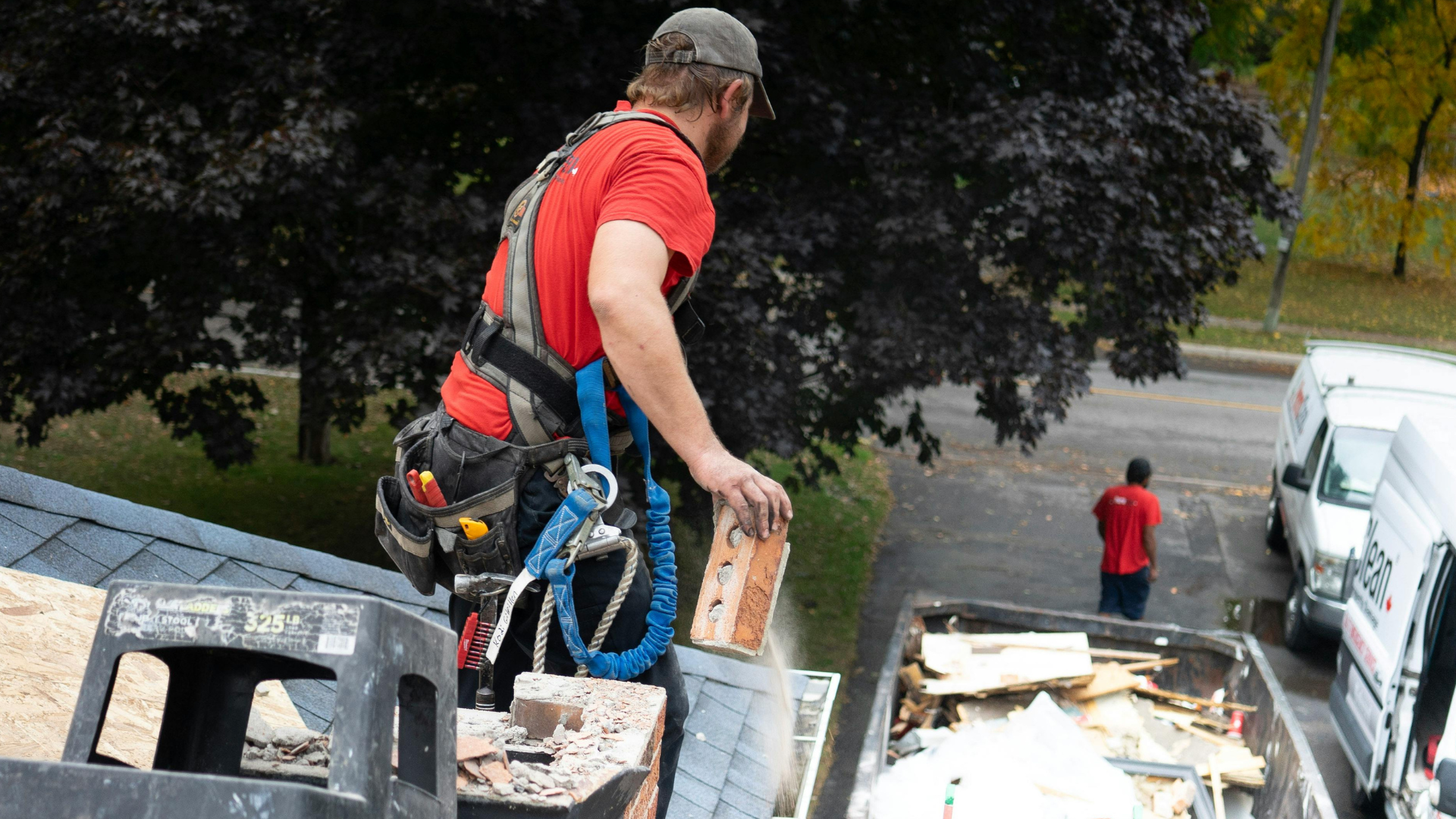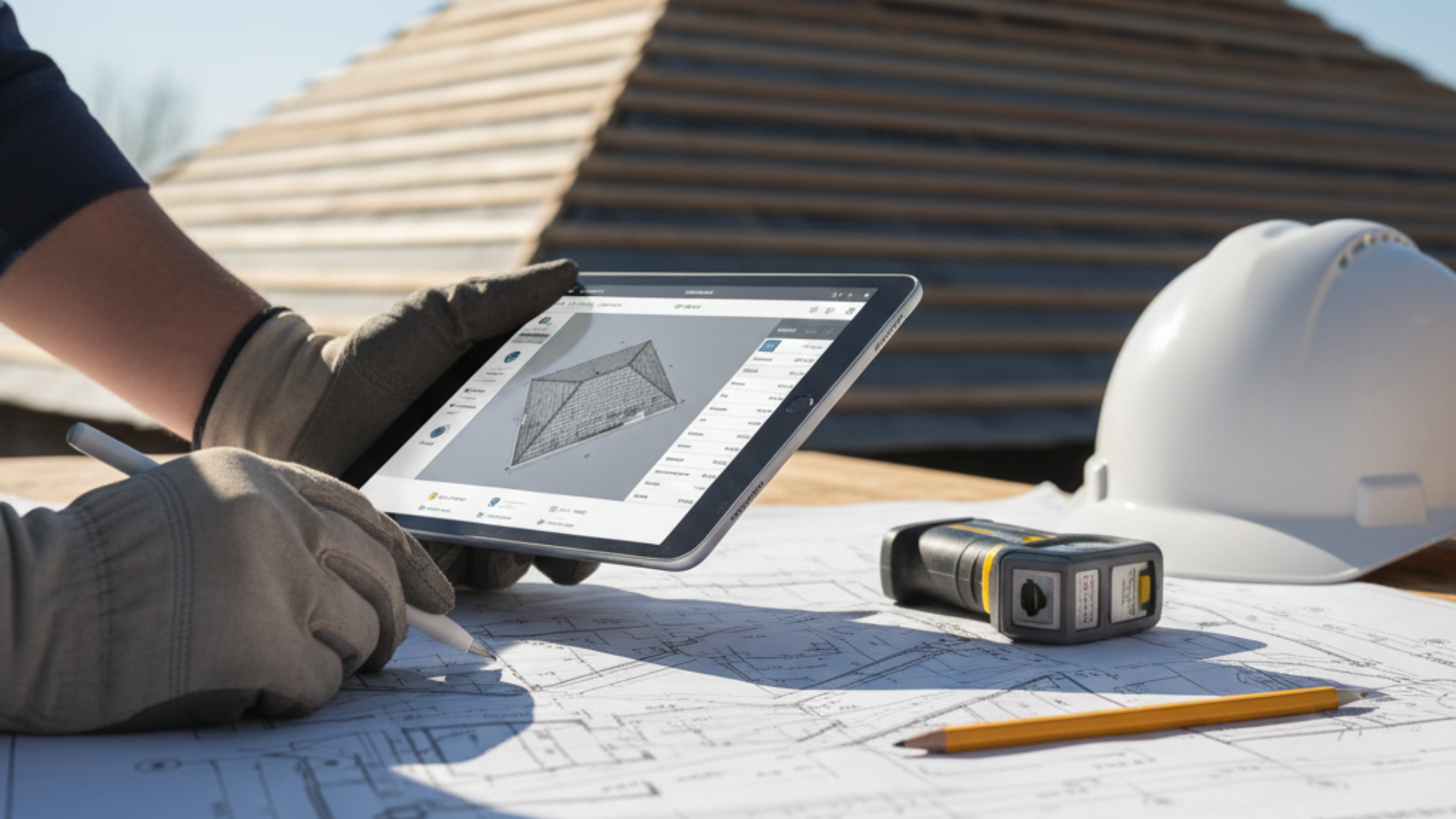August 25, 2025
Many roofing contractors still rely on tape measures and handwritten notes, valuing that hands-on approach built over the years. But today’s homeowners expect faster, clearer proposals and better communication.
That’s where roofing software really stands out. Digital roofing tools help create accurate estimates in minutes, track project details, and keep your entire roofing company connected, often right from a mobile device on site.
So what truly fits your needs? In this guide, we’ll explore traditional vs. software-based methods, share where each works best, and show how the right roofing project management software can help your business grow while keeping the personal service your customers trust.
Roofing Software vs Manual Methods: Pros and Cons
In a competitive industry, choosing between manual methods and the best roofing software shapes your entire business.
Manual tools help roofing contractors create accurate measurements on unique projects, but roofing software goes beyond that.
With features like CRM, project management tools, dashboards, and revenue forecasting, you can track project data, manage customer details, and streamline workflows across multiple teams.
The right software keeps your roofing company on the same page, improves customer satisfaction, and supports business growth by turning project details and customer
data into valuable insights. It helps you deliver accurate estimates faster and manage every roofing project with confidence.
Key Takeaways:
- Roofing software streamlines estimates, project tracking, and team communication, saving you time and minimizing costly errors.
- Manual methods offer flexibility and hands-on control, particularly in unique jobs or remote sites where digital tools may be less effective.
- The best results often come from blending technology with experience: software increases efficiency, but expert judgment remains crucial for complex projects.
- RooferBase is designed to help all roofing teams, whether large or small, manage estimates, CRM, scheduling, and finances from a single, easy-to-use platform.
Why businesses still trust manual methods for roofing projects
Even in today’s industry, where roofing software helps with faster quotes and easier customer relationship management, many roofing contractors still opt for the manual approach. And there’s a good reason for it.
Here is why the manual method makes sense
Manual roofing methods feel familiar and straightforward:
- Grab your tape measure, notepad, and chalk
- Walk each slope, note penetrations and edges
- Return to the office, calculate material needs by hand or in a spreadsheet
- Create accurate estimates and print or write the proposal
For smaller roofing companies, this hands-on approach isn’t just tradition; it keeps the entire business closely connected to each project.
Manual methods also work effectively in various settings, including historical buildings or remote job sites where software for roofing may struggle with aerial data or connectivity.
Manual vs. Roofing Software for Smaller Businesses
While roofing CRM software, project and business management tools, and centralized customer data bring real advantages, many roofing contractors still value the personal touch, direct oversight, and flexibility that manual methods offer.
For some roofing projects, being on the roof, talking to homeowners, and adjusting estimates manually can feel more reliable than relying solely on software programs.
At the end of the day, it’s about what fits your roofing business best. It could be traditional tools, the right roofing software, or a mix that helps you create accurate estimates, keep customer relationships strong, and give you an edge in a fast-moving market.
Check out: Roofing Software vs Manual Process: What’s Faster, Safer, and Cheaper?
Pros and Cons of the Manual Methods in the Roofing Industry
For many contractors and smaller roofing companies, manual methods have stood the test of time. They help keep the entire business hands-on and connected to each project in a way that software alone sometimes can’t. However, there are trade-offs that every business should consider.
| Pros | Why it matters | Cons | Why it matters |
|---|---|---|---|
| Low upfront cost | Just basic tools, no need for roofing CRM software, subscriptions, or extra project management software. | Time‑intensive | Walking each roof and calculating by hand takes hours, slowing your sales process and project progress. |
| Works anywhere | Great for rural job sites, older buildings, or areas with no aerial data where software for roofing might fail. | Human error | Misread notes or missed details can hurt customer satisfaction and lead to inaccurate estimates. |
| Total flexibility | Easily adjust for irregular roofs or historical details that roofing software can overlook. | Safety risk | Climbing steep or slippery roofs raises the risk to your roofing contractors and project managers. |
| No tech skills needed | New hires and part‑timers can jump in without training on management software or roofing CRM software. | Paperwork overload | Customer data, change orders, and job details end up scattered, making it hard to track project data. |
| Weather tolerance | You can measure in cloudy weather or under tree cover, keeping roofing projects on schedule. | Hard to scale | As the business grows, manual methods can’t easily track progress or streamline workflows. |
Example of a roofing business:
Take a family-owned roofing company that’s been in business for over a decade, handling five to seven roofing projects a week.
They’ve built their reputation on personal service, accurate measurements taken the old-fashioned way, and strong customer relationships developed face-to-face on every job site.
With nothing more than tape measures, chalk lines, and handwritten notes, their yearly cost for measuring tools stays under $200, yet they still create accurate estimates that keep the roofing business profitable.
Instead of relying on roofing CRM software or project management software, this team manually manages customer data and project details.
Why did the family-owned company not opt for a roofing software
It takes more time and adds paperwork, but they believe being hands-on helps maintain customer satisfaction and trust.
While roofing software benefits include sales forecasting, streamlined workflows, and real-time project progress, it sounds appealing, especially for larger roofing contractors; however, the personal touch, local reputation, and direct customer interactions remain their biggest competitive edge in the roofing industry.
What are the key benefits that roofing software brings to the table?
Modern roofing software has changed how roofing contractors manage their entire business.
Instead of relying only on tape measures and spreadsheets, roofing project management software now keeps everything connected on a single centralized platform, designed specifically for the roofing industry.
Main Benefits Of Roofing Software
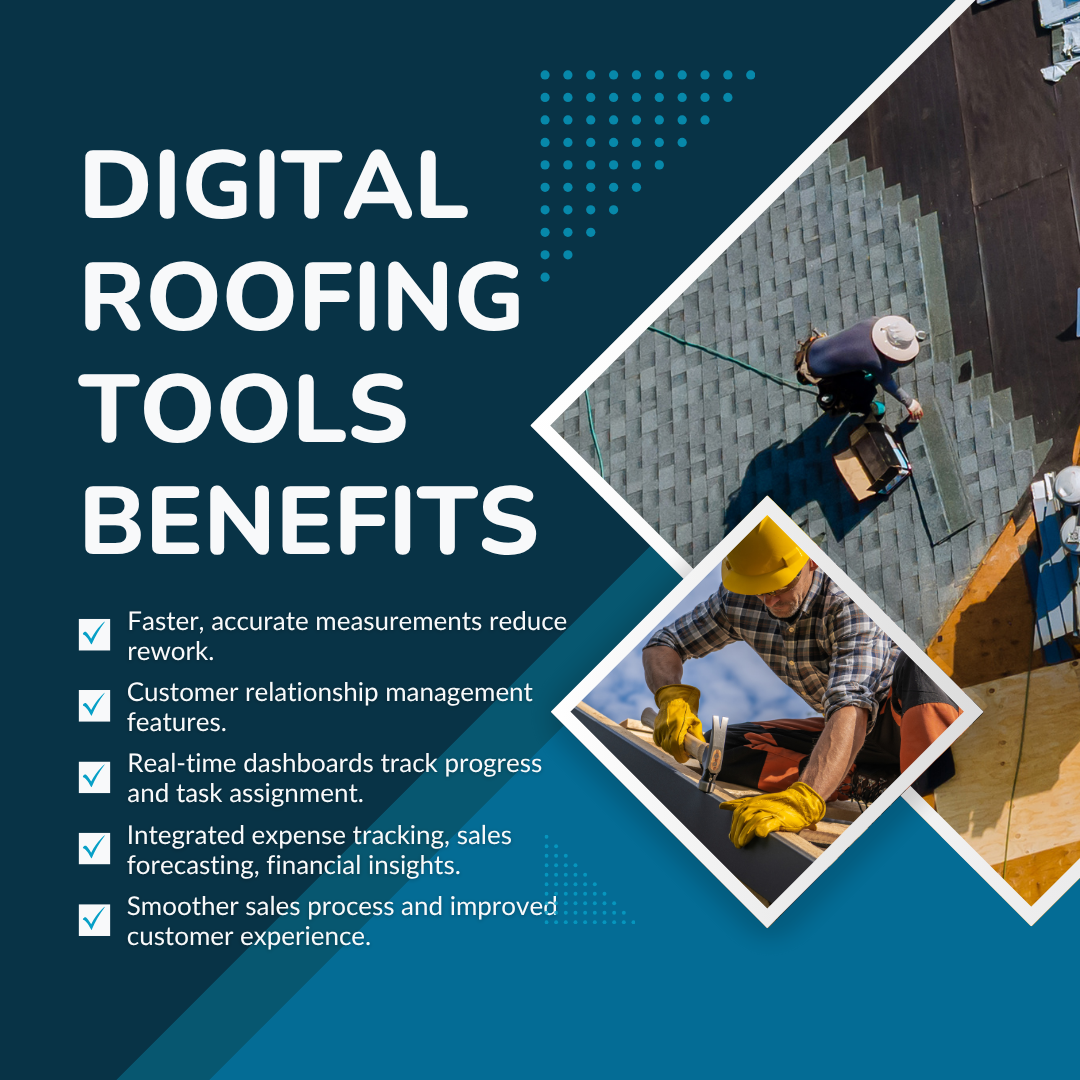
At its core, the best roofing software helps create accurate estimates quickly and safely. Remote measurement tools like aerial imagery, drones, and LIDAR remove the need to climb every roof.
Moreover, automated proposals mean your sales teams can send branded quotes the same day, improving customer satisfaction and giving your roofing company an edge.
Beyond quoting, these tools transform customer relationship management and project data tracking. Project managers, office staff, and crews can all see real-time updates on project progress, financial health, and customer data, without chasing paperwork or duplicating data entry.
Some key benefits digital roofing tools add to your roofing business
- Faster and more accurate measurements that reduce rework
- Customer relationship management features to manage leads and customer details
- Real-time dashboards that help track progress and assign tasks across multiple teams
- Integrated expense tracking, sales forecasting, and financial insights
- A smoother sales process and better customer experience from quote to completion
By keeping project information, customer interactions, and business operations in sync, roofing software helps roofing contractors streamline workflows, build stronger customer relationships, and unlock business success, all while staying competitive in today’s industry.
Does your business struggle to convert clients? Check this out: The Role of Roofing Proposal Software in Winning More Clients.
Pros and Cons of Roofing Software
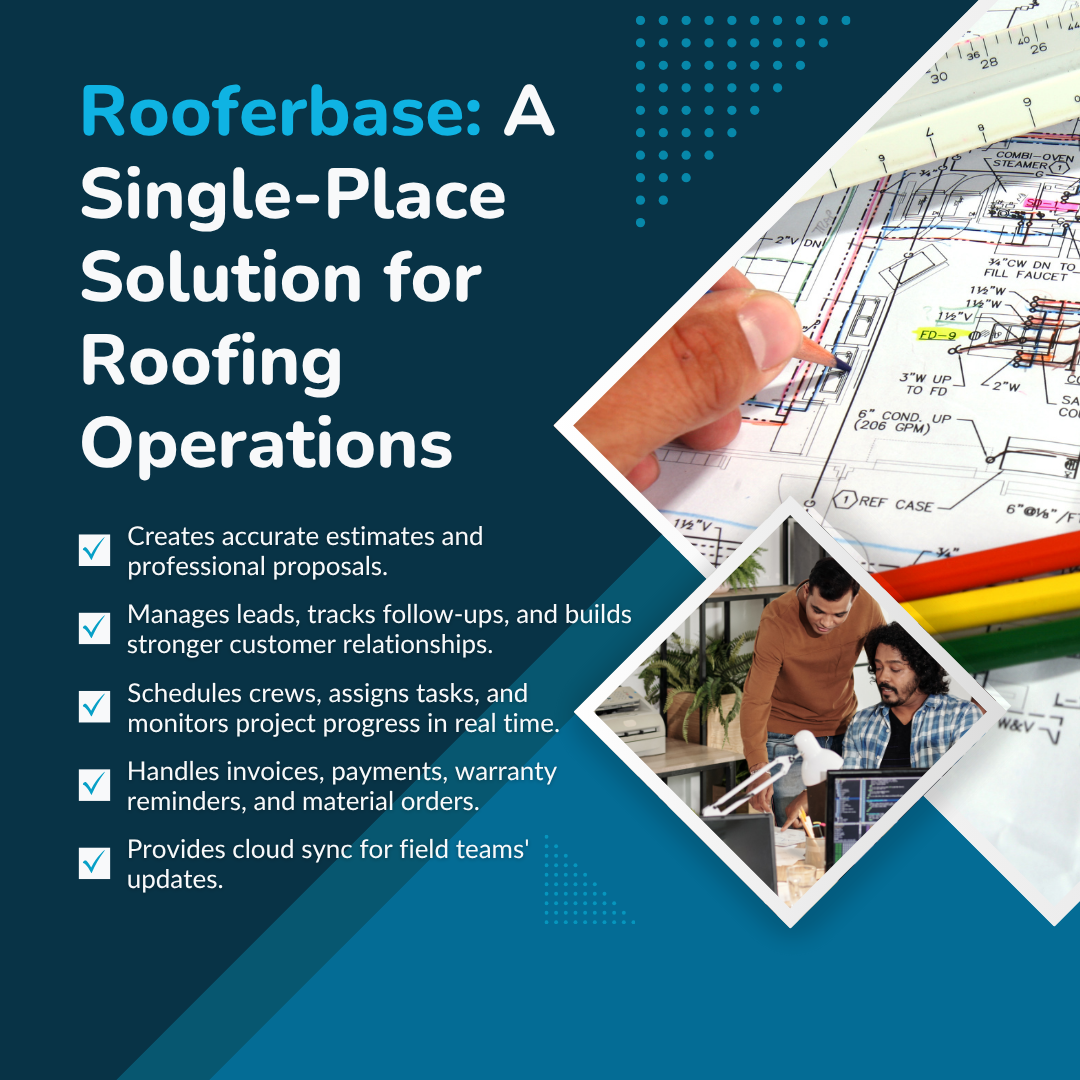
Let’s break down what valuable features a centralized database really offers and where it can still fall short, so you can see both sides before deciding what fits your business best until project completion.
| Pros | Why It Matters | Cons | Why It Matters |
|---|---|---|---|
| Faster estimates | Generate accurate estimates in minutes, helping your roofing business win jobs faster. | Upfront costs | Subscription fees, plus drones or tablets, can challenge smaller roofing companies. |
| Higher accuracy | AI and aerial tools reduce measurement errors and standardize pricing across roofing projects. | Learning curve | Project managers, office staff, and crews need time to adapt; mistakes may happen early on. |
| Improved safety | Remote measuring cuts the need for roof climbs, protecting your roofing contractors. | Internet dependency | Many tools need steady connectivity, which is tough to achieve at rural job sites. |
| Scalability & efficiency | Manage customer relationships, project data, and track progress without adding staff. | Aerial imagery limits | Tree cover, snow, or debris can affect accurate measurements and customer satisfaction. |
| Centralized records & data | Keep customer data, project details, and proposals in one platform, improving workflows. | Software usability | Choosing the wrong roofing software can slow business operations rather than help. |
| Better customer experience | Digital proposals and fast follow‑ups build trust and an edge in the roofing industry. | Underutilization risk | Without training, the benefits of even the best roofing software can be missed. |
| Data insights & forecasting | Spot busy seasons, most profitable jobs, and sales process trends for smarter decisions. | Dependence on technology | Overreliance may weaken an estimator's judgment and hands‑on feel. |
| Mobile & cloud access | Teams view project progress, assign tasks, and create accurate estimates anywhere. | _ | _ |
| Integration with other tools | Connect CRM software, accounting, and task management software for smoother operations. | _ | _ |
If you are worried about integrating roofing software for your business, check out Integrating Roofing Software into Your Daily Operations: A Practical Guide.
When each method makes sense for customer satisfaction
Every roofing business is unique, and what works for one crew might not fit another. It really comes down to your team size, job volume, and where you see your company growing.
Manual methods work best for:
- You run a small, close-knit team handling just a handful of roofing projects each week.
- Your work often includes unique, historic, or highly custom roofs that don’t fit standard templates.
- Jobs are in remote areas where satellite imagery isn’t reliable and Wi-Fi is subpar at best.
- You’re launching your business, and every dollar saved matters, so you stick with measuring tapes and spreadsheets.
Roofing management software fits best for:
- Your team is bidding daily, especially on insurance or commercial jobs that demand a quick turnaround.
- You’re planning to grow into new service areas and want smoother scheduling and less manual data entry.
- Admin tasks, proposals, and paperwork are eating up too many evenings and weekends.
- You want to rely on dashboards and forecasting tools to guide decisions rather than gut feel alone.
Finding the right fit isn’t about choosing sides. It’s about knowing where your strengths lie and what tools will help you monitor progress in a timely manner.
The Hybrid Approach (the best of both worlds)
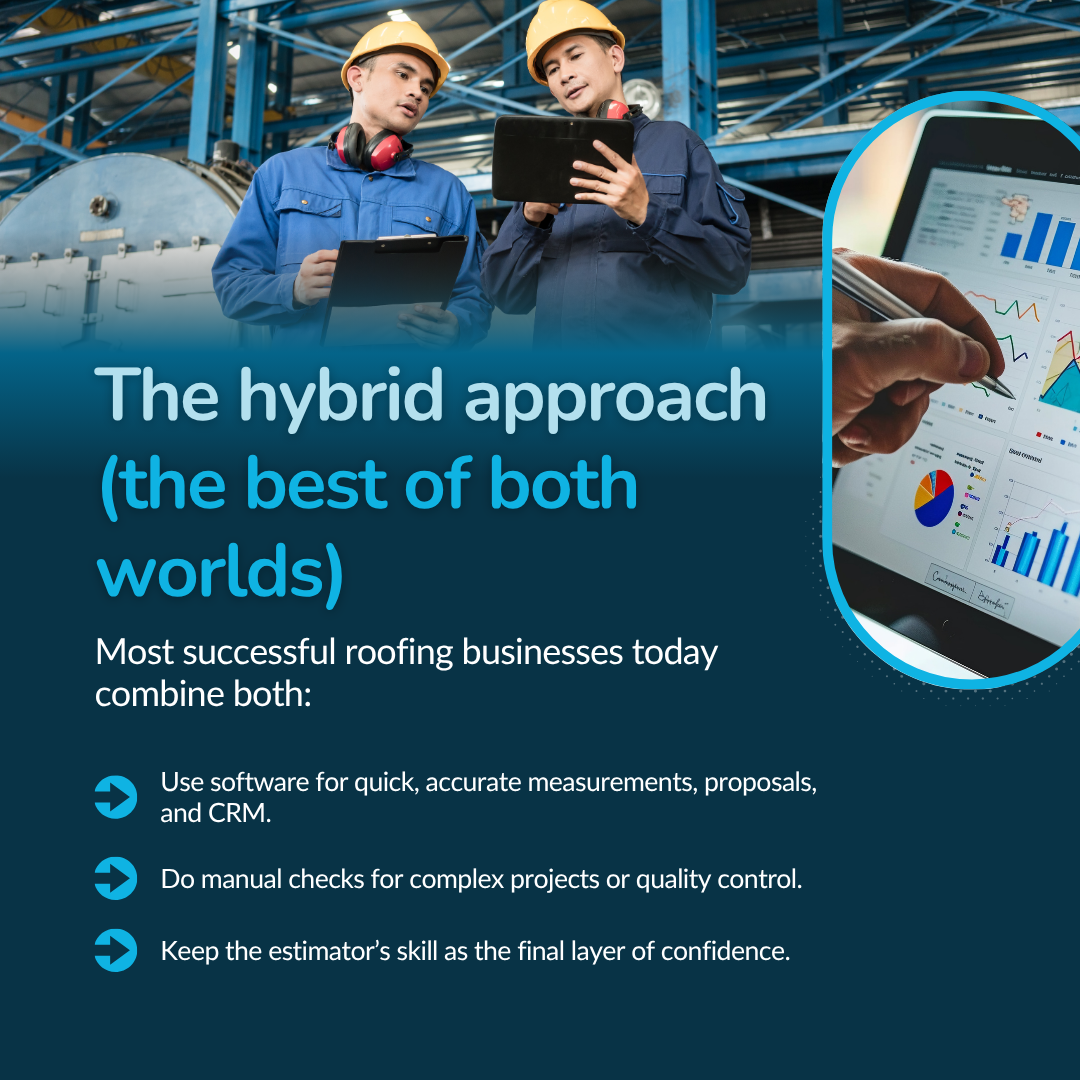
Many roofing businesses today find real success by not choosing one side at all. Instead, they blend technology with hands-on expertise.
Roofing software helps teams create fast, accurate measurements, polished proposals, and manage customer interactions in one place.
But for complex projects, unique historical roofs, or quality checks, nothing replaces an experienced estimator’s eye.
By keeping digital tools in sync with on-the-ground judgment, roofing contractors can stay efficient, reduce costly errors, and still bring the personal touch clients value. It’s this balanced approach that often turns a good roofing business into a truly competitive, trusted brand.
Roofing CRM software benefits that directly grow your business
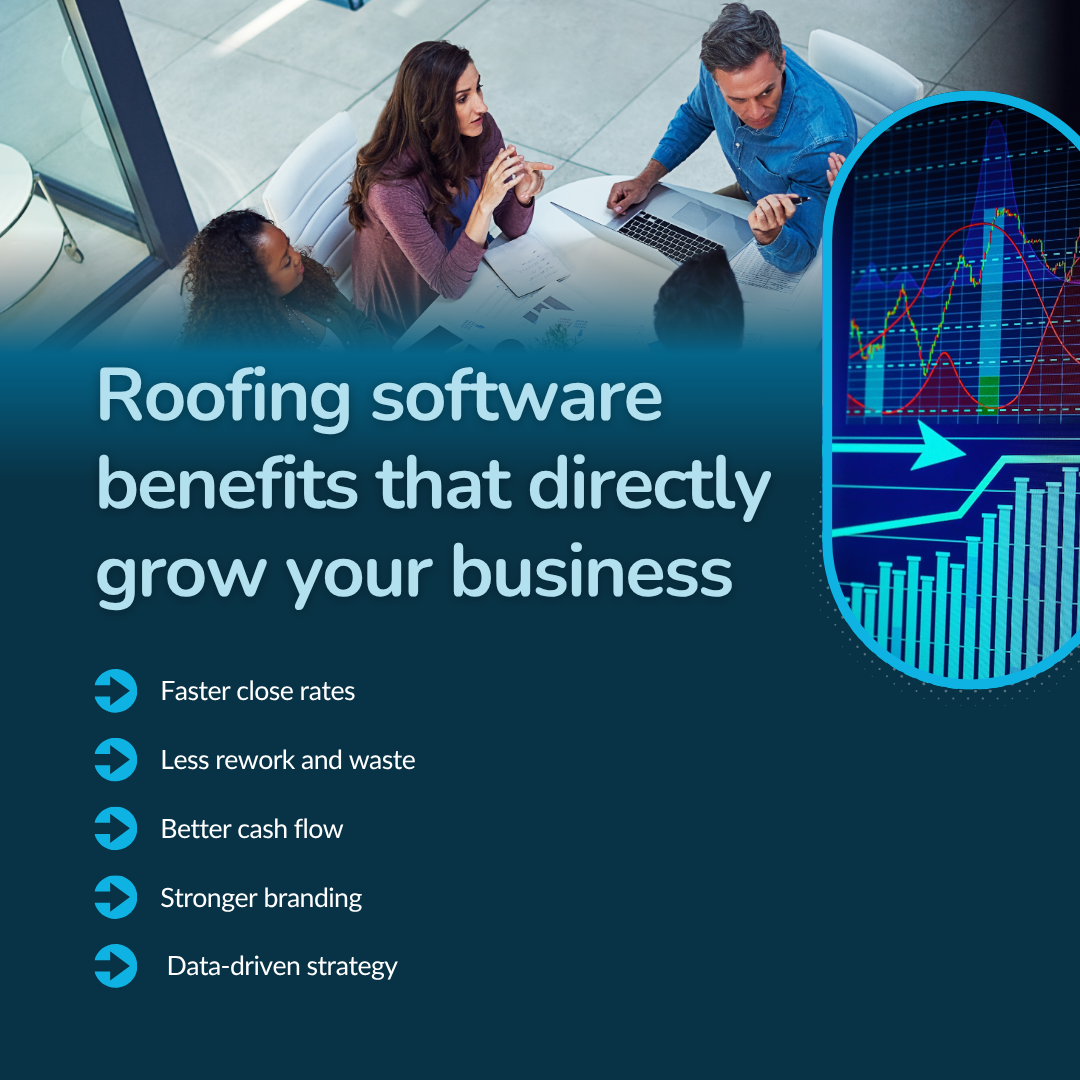
1. Faster closing rates
Imagine a homeowner calls at 10 a.m. and by lunch, you’ve sent a professional proposal straight to their inbox. Many contractors find that being first to quote often means being first to close.
However, tools that create accurate estimates, establish efficient communication, and produce proposals in minutes can make that possible. They will help you secure jobs before competitors even start crunching numbers.
2. Less rework and waste
Earlier, mid-sized roofers tended to over-order shingles, which accounts for waste by 10–15%. After switching to digital measurements and roofing project management software, overruns dropped dramatically, saving thousands each year. That’s the power of accurate measurements and consistent data.
3. Better cash flow management
Tracking deposits, progress payments, and balances can be a nightmare on paper. But centralized dashboards let you see exactly who’s paid, what’s outstanding, create invoices, and help keep your financial status healthy and predictable.
4. Stronger branding
Picture sending a clean, branded digital proposal instead of a handwritten note. Homeowners see you as professional and tech-forward, which builds trust and often justifies a premium price.
5. Data-driven strategy
You can quickly see your busiest months, which sales reps close the most deals, and which roof types deliver the best margins. That insight helps you adjust pricing, plan
staffing, and focus marketing dollars where they matter most.
6. Happier teams
Crews spend less time on paperwork or repetitive data entry and more time on the roof doing what they do best. Office staff can focus on managing customer relationships and improving customer satisfaction instead of chasing missing job details.
Here is more about Why Your Roofing Business Needs Specialized Roofing Software.
Choosing what’s right for your business (traditional vs software-based)
Every business has its own rhythm. Some teams thrive with tape measures and clipboards; others need the speed and precision of digital tools. So, ask yourself honestly:
- How many roofing projects are we quoting each week?
- Are we missing out on jobs because our estimates take too long?
- Do change orders or simple miscalculations often eat into our profit margins?
- Are we looking to add new crews, expand service areas, or bid on more commercial work this year?
- Do we usually have good internet access on-site to support cloud tools?
If you’re nodding “yes” to growing volume, missed bids, or plans to scale, investing in software could quickly pay for itself through faster estimates, fewer errors, and stronger customer satisfaction.
On the other hand, if you handle a few unique projects a month and prefer hands-on control, staying traditional can still make perfect sense. The best choice is the one that truly fits your workflow, team, and growth vision.
Check out: Manual vs. Automated Roofing Measurements: Which One is Better?
Where RooferBase Fits In
At the end of the day, it’s not just about picking any project management software. It’s about choosing a product specifically designed for roofing contractors. That’s exactly where RooferBase shines.
RooferBase is designed to help you run your entire roofing operation from one place, whether you’re a small team or a company aiming to scale. For example, you can:
- Create accurate estimates and professional proposals using aerial, satellite, or drone data.
- Manage leads, track follow-ups, and build stronger customer relationships with its built-in CRM.
- Schedule crews, assign tasks, and monitor project progress in real time right from the office or job site.
- Handle invoices, payments, warranty reminders, and material orders in a single, streamlined platform.
- Access everything from your phone or tablet thanks to cloud sync, so your field teams stay updated anywhere.
It keeps things simple for small teams but has the depth to support bigger businesses as they grow, making it a practical and scalable choice.
Wrapping It All Together
At the end of the day, choosing between manual methods and roofing software isn’t about picking sides; it’s about finding what truly fits your team, your jobs, and where you see your business heading.
Some contractors stick to traditional tools and personal touch, while others embrace digital speed and accuracy to grow faster. And many find success in blending both.
With purpose-built tools like RooferBase, it’s now easier than ever to stay organized, impress clients, and keep your crew focused on quality work no matter how you decide to work tomorrow.
RooferBase - The #1 Roofing Software
Tired of juggling spreadsheets and second‑guessing your bids? Let RooferBase do the heavy lifting so you can focus on roofs, not paperwork.
See it in action! Schedule your demo today and discover how effortless growth can feel.
FAQs
1. Which is the best software for roofing companies?
RooferBase is the best roofing software, offering CRM, accurate estimates, project management, and centralized customer data. It streamlines operations, boosts customer satisfaction, and drives business growth.
2. How big is the roofing software market?
The global roofing software market was valued at around $1.5 billion in 2024 and is projected to grow to $3.2 billion by 2033, according to Market Research Intellect. This growth highlights the rising demand for software in the roofing industry, particularly CRM software and project management solutions.
3. How are roofing companies using AI?
Roofing companies use AI to improve customer management, automate measurements, track job progress, and enhance sales forecasting. AI-powered CRM software helps monitor customer interactions, reduce data entry, and efficiently manage project details.





